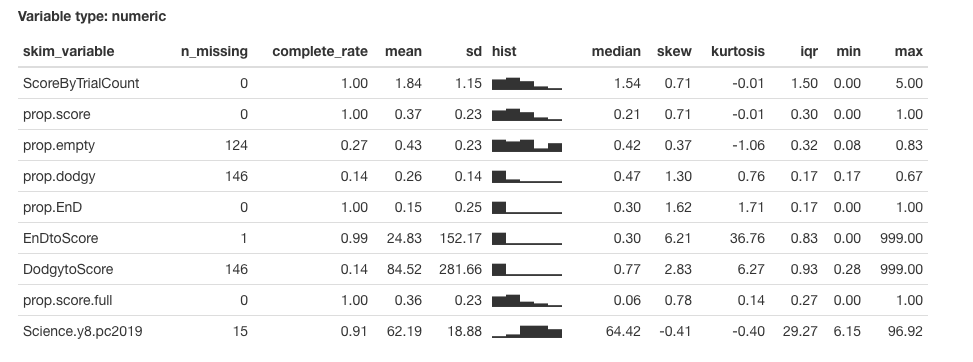I have tested this a bit more myself. If I just use skim, or my tailored skim, then it renders fine with the skimr_digits specified into html in both notebook AND markdown. So thats good.
In the previous incarnation, I had been using knit_print to render my table:
SDWideSkim<-my_skim(SD19WithSciencePlot) %>% yank ("numeric") %>% regulartable() %>% autofit() %>% width(width=1)
knit_print(SDWideSkim)
(you may notice from my code I don't really know what I'm doing but this has been working). I get a nice table. Skimr_digit only works if I just use
my_skim(SD19WithSciencePlot) %>% yank ("numeric")
It looks like if I try to pipe the output into a flextable object then it ignores the skimr digits.
It does say in the vignette
For documents rendered by knitr , the package provides a custom knit_print method. To use it, the final line of your code chunk should have a skim_df object.
So perhaps the additional pipe means this doesnt work.
This isn't a massive problem as now that its defaulting to knit_print (which I think is new), it looks quite nice in markdown. However, in notebook, the rendered table is not very well formatted:
In markdown the same table from the same code and source looks like this:
I think this is due to your earlier point
This seem to be because, in html_notebook format, knit_print is not called. Just a normal print of skimr object...
I tried piping the skim to knit_print in notebook but it didn't change the formatting.
I guess I can manage this by using Markdown instead. May be worth noting for others and in the manual that you can only see the effects of skimr_digit in the rendered doc and not in notebook, and that you can not pipe the output on - at least not into flextable. Explicitly noting the print difference between Notebook and Markdown might be useful too. I don't think thats noted in the vignette but it may be obvious to those who understand the difference better than I


